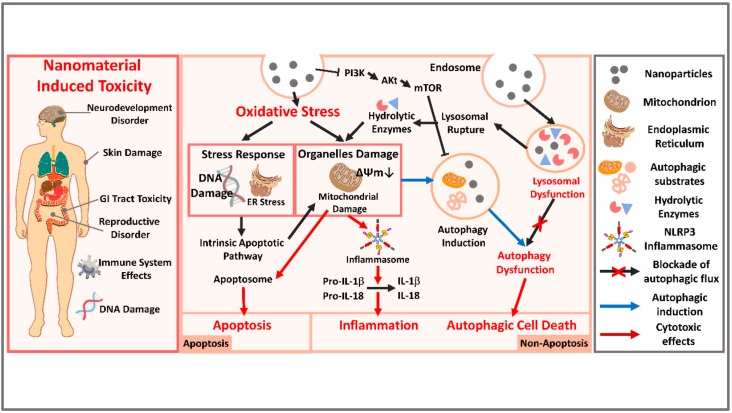Figure 1.
An overview of the mechanism of nanomaterial-induced autophagy-related toxicity and subsequent systematic potential toxic effects. The overall toxicity caused by nanomaterials includes neurodevelopmental disorders, skin damage, gastrointestinal tract toxicity, reproductive disorders, immune system effects, DNA damage, and so on. One of the major forms of toxicity caused by nanomaterials is the oxidative stress induced by ROS and resulting in ER stress and mitochondria and DNA damage. The stress response and organelle damage can eventually induce apoptotic cell death. ROS production results in mitochondrial damage that activates the NLRP3 inflammasome and cellular inflammation. Another major implication for nanomaterial-induced toxicity is autophagy dysfunction. Nanomaterial-induced autophagy and lysosomal dysfunction are displayed as blue arrows in the figure. The initiation step of autophagy is induced by the accumulation of nanomaterials in autophagosomes and blocked vesicle trafficking or by the inhibition of the PI3K/Akt/mTOR pathways. The second step of autophagic toxicity can be induced by overloading of nanomaterials in the lysosomes, leading to damage to the organelle compartments, lysosomal membrane permeabilization (LMP), and release of hydrolytic enzymes. The damaged lysosomes also cause blocked autophagosome-lysosome fusion, eventually leading to autophagic cell death. Altogether, stress responses and organelle damage may synergistically promote cell death, including that caused by apoptosis activation, NLRP3 inflammasome activation, or autophagy.

